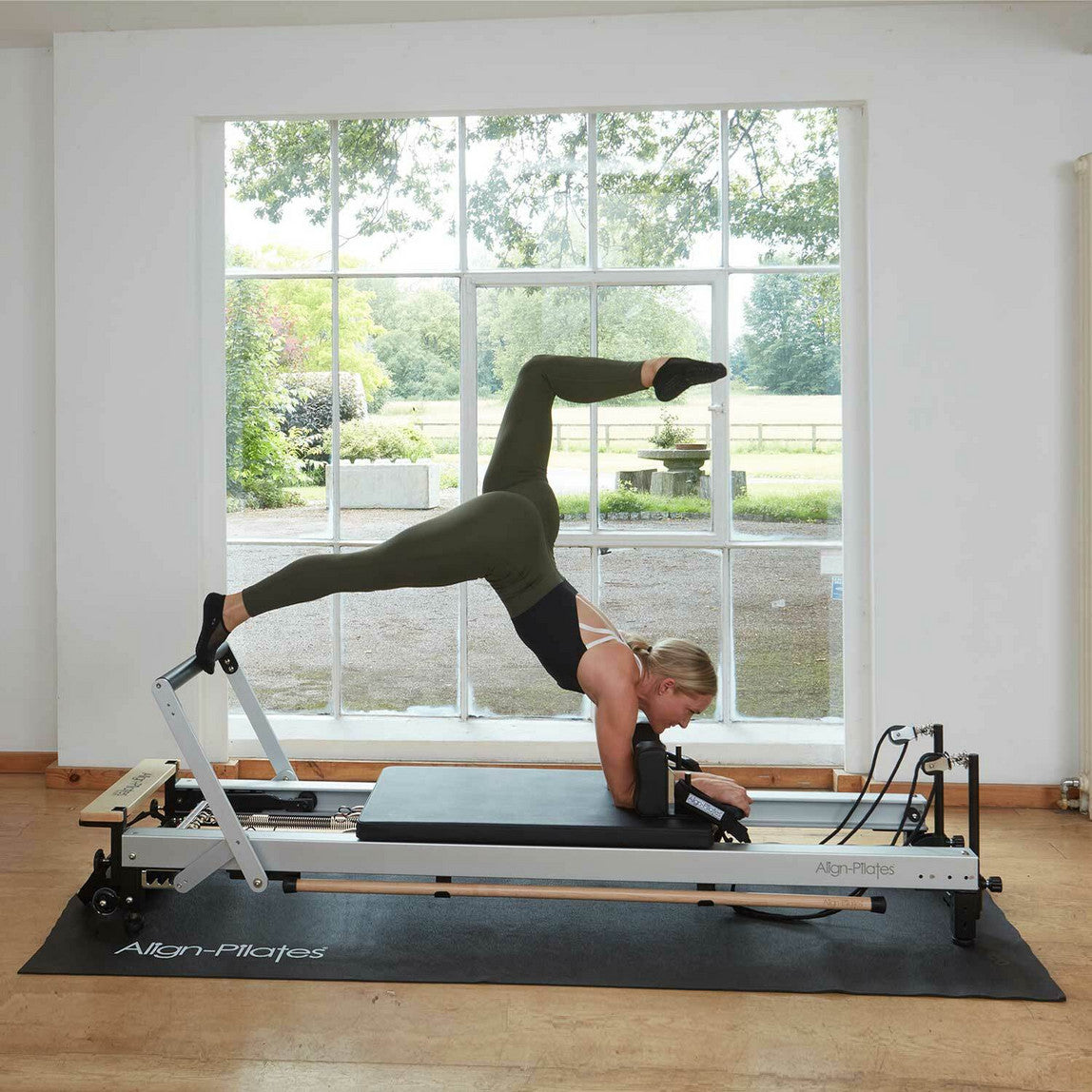Pilates helps both men and women to develop their own ideal strength, endurance and posture, without excessive stress on the joints or muscles. Both exercisers, athletes and other sports professionals benefit from the Pilates method. It allows them to improve their posture and body control. Pilates is perfect for cardiovascular (aerobic) training, sports or rehabilitation. Pilates helps to strengthen the body, gives vitality and increases mobility.
Pilates pioneer Joseph Pilates and the Mind&Body exercises he developed are designed to strengthen the weak and challenge the strong. The strength of the Pilates method is that the exercises focus on the (postural) muscles that keep the body balanced and support the spine and posture. In particular, Pilates exercises teach the importance of breathing, the importance of spinal balance, and strengthening of the deep body muscles and abdominal muscles.
The power of Pilates movements is based on six principles that guide training: precision, focus, concentration, control, flow and controlled breathing. The cornerstone of Pilates training is to develop strength, endurance, mobility, body control and body awareness.
The benefits of Pilates
Proven benefits of Pilates include:
- stronger but lighter muscles (less mass, more mobility)
- improves posture related problems
- increases muscle strength, strengthens the body, and increases limb mobility
- helps reduce injuries
- improves functional fitness, mobility increases
- balances strength and flexibility
- increase body awareness
- no hard strain, joint-friendly
- the exercises can be tailored for a rehabilitator or an elite athlete
- complements other forms of exercise
- improve performance in other sports such as golf, running, triathlon, skiing, skating, etc.)
- develops balance, concentration, coordination and blood circulation
Pilates for back problems
When the basics have been fixed, the posture and the tension in the joints and muscles have improved. This is one of the reasons why Pilates is often recommended for people with back problems. Mobility and flexibility increase, and muscle firmness and balance develop with regular training. With regular Pilates training, you will notice an increase in muscle strength, flexibility, mobility, balance and body control, as well as a decrease in back and other general pains and strains. It is recommended that there are exercises at least two or three times a week.
Pilates for rehabilitation and recovery
The Pilates method is a way of moving and doing exercises that can be applied to different injuries, diseases and conditions. With the right kind of Pilates training, you can contribute to a faster recovery from injuries, because the person already has a strong physique. One of the most important tasks of Pilates instructors is helping clients with pain relief and maintaining daily functioning. Pilates can help with chronic pain, or other similar ailments, such as back and neck pain, scoliosis, spinal rheumatism, MS, osteopenia / osteoporosis and arthritis, as well as those recovering from breast cancer.
Pilates for athletes
Pilates improves performance in various sports activities – it helps you ski better, develop your golf swing, run faster and cycle longer. It is an excellent form of improving performance and helping to stay in shape without injuries.
Whether you are a professional athlete or a hobbyist, you can benefit from the Pilates method. Pilates is a non-impact, resistance-based form of exercise, where joint stress is negligible. In this way, Pilates is a safe, versatile, but effective way, regardless of your athletic goals.
The basic principles of Pilates
At the core of balance
Pilates method exercises consist of balance exercises. The core of the activity consists of the exercise of many different muscles that affect the function of the spine, hips and shoulders. Important muscles make standing, walking, running and sneezing etc. possible. Strong muscles distribute the weight load in a balanced way and protect the back by improving posture.
At the same time, the Pilates method tones and strengthens the body.
Quality over quantity
Pilates movements are precise and controlled. Controlling the correctness and accuracy of movements is more important than the number of repetitions. For example, ten correctly repeated abdominal muscle movements are equivalent to 100 sit-ups done in a bad position.
Body control
Pilates teaches you to control your own body so that it is possible to identify the right muscle for a certain movement. This in turn trains the muscles to support the joints and strengthen the body leading to better posture. This is why Pilates is called a mind-body exercise method.
Pilates prevents injuries in your chosen sport by ensuring that the joints and the body are in balance.
"It is the mind itself which builds the body".
Joseph Pilates

